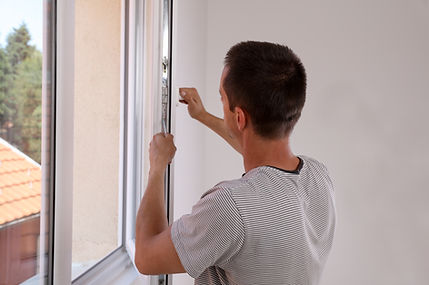
Resources
Efficiency First
Whether you are a homeowner, business manager or facilities manager for an institution, the place to start is looking at how you use energy, your costs and ways you can reduce energy use - leading to savings that can then be spent on electrification and renewable energy projects.
Energy Benchmarking
Check with your electric company for free or low-cost energy home assessments
Business Energy Benchmarking
Heating Bill Assistance
Low Income Home Energy Assistance Program (LIHEAP)
LIHEAP is a federal program that provides financial benefits to low-income households for home energy bills. In Pennsylvania, the program is administered by the Department of Public Welfare (DPW). Available assistance includes cash benefits, which help low-income customers pay for their home energy costs, and crisis payments, which address emergency home energy situations. Help with weatherization improvements may also be available.
Air Sealing & Insulation

Weatherization refers to modifications that protect your home from the outdoor elements, by means of adding attic insulation, caulking, storm doors, and window replacement. These modifications increase energy efficiency and reduce heating and cooling costs. Check out these 31 tips from Constellation Energy.
Programmable thermostats are good choices for homes that are empty for predictable stretches of time. And if they are internet connected you can adjust the heating or cooling if you are headed home early.

Passive Solar Building Design
For bold actions to reduce your home energy use, we suggest you learn about Passive House concepts like: orientation of the roof, porches and eaves to consider seasonal radiation from the sun, or going beyond building codes for insulation and reducing air leaks. Consider a “blower door test” to find out just how tight your house is and where you can improve your heating and A/C efficiency.
Go to phius.org to learn more.
Cool Roofs
Cool roofs use light-colored, highly reflective materials to regulate building temperatures without increasing electricity demand, which can result in energy savings of up to 10 to 15 percent. Cool roofs can also reduce the "heat island" effect in cities and suburbs, a phenomenon that produces higher temperatures in densely populated areas due to extensive changes in the landscape, as well as associated smog and carbon emissions.
Fuel Efficient Vehicles
For transportation, be aware of the total cost of ownership of your vehicles. A big car or SUV is going to cost more to fill up with gas than a smaller fuel efficient vehicle. An SUV that gets 15 miles/gal that costs $300 in gasoline vs a 50 MPG car that costs $210 less per month results in $2,520/year in savings.
Learn more at FuelEconomy.gov.
High Efficiency Appliances
When the time comes to replace your appliance, buy Energy Star and look for a rebate from from your electric company (e.g. PECO Rebates)
Buying a new home appliance it is an opportunity for a 25-year investment in energy savings! Purchase an Energy Star-rated appliance, with a low electricity use per year. You will save money over the lifetime of the appliance.
Windows & Doors
Old windows and doors that fit poorly or do not provide adequate insulation from the outdoor temperature differences can go a long way to improving the energy efficiency of your home.
There are no shortage of window and door solution providers in Pennsylvania. You can learn about the rating systems and terminology used by installers at Energy.gov.

Lighting
LED lighting has come a long way in recent years. The best LED bulbs now have the same colorization as incandescent bulbs, are completely dimmable and are cost competitive, saving energy and money over time. Search for “dimmable led bulbs accurate color” for reviews and product recommendations.
Plant Trees
Trees absorb carbon and provide shade that helps reduce our home cooling needs. Find programs to participate in here:
Alternatives to Driving
Reducing car miles driven, especially single-occupant-vehicle miles saves energy, dollars and doctor visits. Here are some suggestions:
-
Car pooling (PennDoT Park & Ride Locations)
-
Biking and Walking (Circuit Trails)
-
Public transportation (Amtrak)
-
Telecommuting (working from home)






